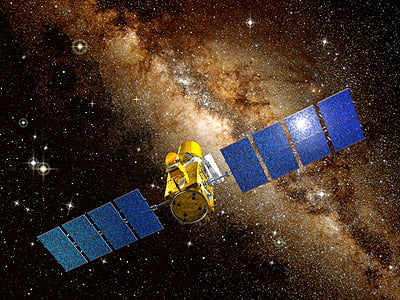With several space- and ground-based telescopes, as well as dedicated space missions searching for exoplanets, or planets orbiting other stars, the count of new discoveries keeps rising. The current total now stands at 287 planets. The newest spacecraft dedicated to this search, the COROT Mission (Convection, Rotation and planetary Transits), announced the finding of two new exoplanets as well as an unknown celestial object. This discovery may be a "missing link" between stars and planets astronomers have been searching for.
The two new planets are gas giants of the hot Jupiter type, which orbit very close to their parent star and tend to have extensive atmospheres because heat from the nearby star gives them energy to expand. Most of the exoplanets found so far are the gas giant variety because of the limits of current technology.
In addition, an oddity dubbed "COROT-exo-3b" has raised particular interest among astronomers. It appears to be something between a brown dwarf, a sub-stellar object without nuclear fusion at its core but with some stellar characteristics, and a planet. Its radius is too small for it to be a super-planet.
If it is a star, it would be among the smallest ever detected. Follow-up observations from the ground have determined it to be at 20 Jupiter massses. This makes it twice as dense as the metal Platinum.
COROT has also detected extremely faint signals that, if confirmed, could indicate the existence of another exoplanet, as small as 1.7 times Earth's radius.
This is an encouraging sign in the delicate and difficult search for small, rocky exoplanets that COROT has been designed for.
COROT launched in December 2006, with operations beginning in February of 2007. So far the mission has found four exoplanets. The mission started observations of its sixth star field at the beginning of May this year. During this observation phase, which will last 5 months, the spacecraft will simultaneously observe 12,000 stars.
More about COROT.
Original News Source:
ESA
 Universe Today
Universe Today
